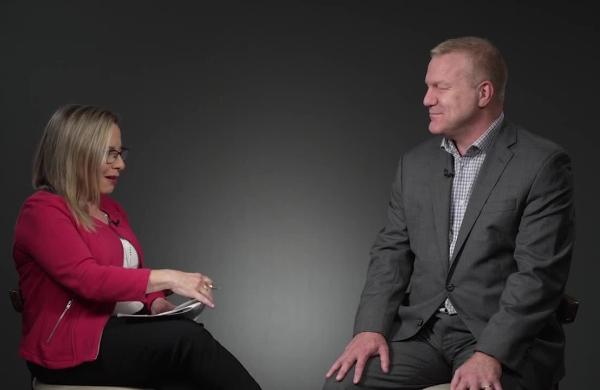More than a year has passed since the subprime mortgage market in the U.S. imploded, dragging down with it credit and equity markets around the world, but the ripple effects just keep coming. In July, Wachovia Corp. stunned Wall Street by announcing an $8.9 billion write-down for the second quarter — much more than analysts expected — owing largely to troubles with the Charlotte, North Carolina–based bank’s mortgage lending subsidiary, Golden West Financial Corp. To help offset the losses, Wachovia announced it would slash its dividend and eliminate thousands of jobs, a strategy that many of its bulge-bracket counterparts had already undertaken to help cope with credit-related losses that the International Monetary Fund estimates at more than $500 billion worldwide, through the end of the second quarter.
“Staffs are at 60 percent of what they were a year ago,” says Peter Arian, a financial services recruiter with Analytic Recruiting in New York. “The sell side used to account for 70 percent of our business; now it’s just 10 percent.”
The downsizing extends at some firms to fixed-income research departments, even as interest in credit-related investments is growing. “Our client business in fixed income was up 20 percent year over year” in the first half of 2008, says Ravi Mattu, global head of fixed-income and equity research at Lehman Brothers in New York. Much of that growth can be attributed to Lehman’s snatching up market share following the collapse of Bear Stearns Cos. earlier this year, he notes.
Limited resources, greater demand for information and a volatile economy make this the most challenging time in recent memory for fixed-income analysts. Investors say no firm has done a better job of rising to the challenge than Lehman, which leads Institutional Investor’s All-America Fixed-Income Research Team for a ninth consecutive year. Lehman captures 47 total team positions, 11 more than JPMorgan, which returns in second place. Banc of America Securities holds steady in third, with 23 team positions, while UBS rises one level, to fourth, with 19. Goldman, Sachs & Co. jumps two spots, to fifth place, with 18 positions. Results are based on responses from more than 1,330 money managers and buy-side analysts at nearly 490 institutions managing an estimated $11.1 trillion in U.S. fixed-income assets.
Research providers gained a lot of efficiencies in recent years — eliminating quarterly reports and other so-called maintenance research, expanding Web sites and other electronic delivery systems for written research, cutting back on analysts’ travel time — and so had to be creative in finding new, cost-effective ways to meet the needs of clients that want up-to-the-minute information on an ever-changing market. For some firms that has meant shifting the focus away from published research and toward direct communication with top-tier clients.
“As the issuer and client coverage universe grows, it becomes more challenging to address all the needs of your constituents by publishing,” says Larry Bland, head of high-yield research at Banc of America Securities in New York and the leader of the top-ranked team in Health Care. Bland says BofA’s fixed-income research department, with 40 publishing analysts in the U.S., has remained stable over the past year. “We rely on live client contact and allocate our resources to those clients who need immediate attention and who recognize the value of our franchise.”
In November the firm hosted a two-day conference, “Volatility in the Credit Markets,” in Orlando, Florida. About 350 clients attended and were afforded the opportunity to meet in small groups or one-on-one with analysts and with executives from some 120 companies with high-yield offerings. Clients particularly appreciate being provided access to company managements, given the many small-capitalization and private capital structures common in the leveraged credit markets, Bland says.
Lehman has opted for a similar approach. “Rather than going to elaborate dog-and-pony road shows, we’re inviting people to our own dining room,” says Mattu, adding that the firm has 165 U.S. fixed-income publishing analysts, unchanged from a year ago. In June, Lehman’s quantitative research team hosted a dinner for 40 clients, and analysts who cover high-yield sectors gave a series of presentations for about 100 clients in the firm’s auditorium. “We are focusing even more on the client model because of the opportunity to pick up market share,” Mattu explains.
JPMorgan responded to the clamoring for information by Asian clients by sending a group of U.S.-based researchers — credit strategists, insurance and bank analysts and specialists in collateralized debt obligations — to Hong Kong, Singapore, Sydney, Taipei and Tokyo in September and again in February to meet with about 500 investors to discuss the subprime crisis and its ramifications. “Everyone had lots of questions to ask,” recalls Margaret Cannella, New York–based global head of credit research and U.S. corporate strategy. Investors sought the analysts’ assessment of the depth, scope and likely duration of the credit crisis, both within the U.S. and in markets across the globe, she says.
JPMorgan, with 87 U.S. fixed-income publishing analysts, is one of the few firms to add researchers this year, owing to JPMorgan Chase & Co.’s takeover of Bear Stearns (fourth last year), which was completed May 30. Cannella says her department picked up eight Bear analysts, including Susan Berliner, who was No. 3 in Real Estate Investment Trusts and runner-up in Building last year and is No. 2 in the latter sector this year; Douglas Colandrea, No. 2 in Media & Entertainment and No. 3 in Telecommunications Services last year and a runner-up in both categories this year; and Ian Jaffe, No. 2 in Banks and a runner-up in Nonbank Financials last year and No. 3 in Banks this year. (Jaffe replaced Kabir Caprihan, a runner-up last year in Banks, who moved over to the buy side.)
Ten additional Bear staffers joined JPMorgan’s U.S. fixed-income research department as junior analysts or went to other areas of the firm, Cannella says. Bear’s Financial Analytics and Structured Transactions group moved over, as well. “We absorbed a good portion of them, including their most senior people,” she notes.
Other research departments have responded to the credit crisis by reorganizing their business models. UBS moved its nine-member high-grade credit group to its proprietary trading desk in May, although the firm’s high-yield strategists still publish research. “We took the view that in investment grade, trading activity tended to be more thematic — sectors were moving together rather than as single names — and we would rely on a team of senior desk analysts to dive deeper into specific credits in volatile sectors on an ad hoc basis,” explains Jeffrey Skoglund, co-head of global credit research in New York and leader of the third-place team in Autos & Auto Parts.
In December the firm moved four of its 15 nonpublishing underwriting analysts to its high-yield analyst team, which does publish, and eliminated the remaining positions; the structured securities group lost three analysts to attrition. After all the changes, UBS has 54 U.S. fixed-income publishing analysts, down from 62 last year, according to Laurie Goodman, New York–based global co-head of fixed-income research and the leader or co-leader of top-ranked teams
in Mortgage-Backed Securities/Adjustable Rate Mortgages, MBS/Agency-Structured Products, MBS/Nonagency-Structured Products and MBS Strategy (and leader of the No. 2 teams in MBS/Agency Pass-Throughs and MBS/Prepayments).
One year ago, as the subprime mortgage crisis was beginning to unfold, II asked Goodman — who has led the top-ranked MBS Strategy team for nine years running — to predict what the coming months would hold. Among her accurate forecasts: Early 2008 would see a slowdown in the real economy, with falling home prices and rising foreclosure rates, and there would be significant consolidation among mortgage originators. “When the dust settles, the mortgage market will look quite different,” she said.
Goodman also predicted that aggressive moves by the Federal Reserve Board would help stablilize securities prices. Although bond prices have responded favorably to reductions in the federal funds rate — the Fed has cut its benchmark overnight rate, currently at 2.0 percent, seven times since last September — the economic downturn and the closing of nonagency mortgage markets caused prices to continue to deteriorate.
“The one thing we missed last year — and everyone else missed, as well — was the shutdown of the nonagency markets,” Goodman says. “This made it much more difficult for borrowers to obtain a mortgage, which contributed to more home price depreciation, which contributed to a further tightening of lending standards, leading to more price deterioration and even worse performance.”
What does she see ahead? More of the same. “Nonagency MBS issuance will remain very light for the next year. For new nonagency securitization to resume in any size, the huge overhang of securitized paper must clear the market,” Goodman says. “Prices are now at very distressed levels. Fundamentally, even if losses turn out to be much worse than what we are predicting in our models, AAA subprime and supersenior Alt-A paper look cheap at current prices. However, it is unrealistic to think prices will rise sharply in the near term. The technicals remain poor, in the sense that there is an overhang of paper from investors who want to sell but are reluctant to do so at current prices. This puts a ceiling on how well this paper can trade.”
With few buyers, and what she calls the “vicious cycle” of falling home prices leading to falling securities prices and tightening loan standards leading to a further slide in home prices, the crisis has to play out in its own time before real recovery can occur. That could be mid-2009 or beyond, she thinks. “The Fed has done everything it can by trying to improve the liquidity in the system, but they can’t make the problem go away,” she says.
Christopher Flanagan, JPMorgan’s New York–based global head of structured finance research, agrees. “There’s not much the Fed can do at this point — that’s another part of why the markets have come under so much pressure,” says Flanagan, who leads or co-leads the top teams in Asset-Backed Securities/Consumer, ABS/Prepayments, ABS/Real Estate and Collateralized Debt Obligations.
Last summer Flanagan was critical of the Fed’s failure to act aggressively to stanch the spread of the subprime crisis before it could affect other areas of the fixed-income marketplace. “The downward spiral still exists today,” he says.
At the time, Flanagan was advising clients to stay short as prices were plummeting: The ABX 07-1 BBB–, the index that tracks subprime mortgage loans made in the second half of 2006, had fallen from 98.35 points in January 2007 to 33.53 eight months later. Investors that followed Flanagan’s advice made a bundle: As of mid-August the index stood at 4.79.
Flanagan believes that investor focus has now shifted away from the subprime market and toward the broader economy. He predicts that conditions will worsen. “Consumption will weaken and credit performance will deteriorate further, so there will be renewed rounds of selling” in ABS and beyond, he predicts.
Despite the doom and gloom, Flanagan says that asset-backed securities, particularly credit cards, are cheap. His top pick is BBB credit cards, which he says “have hundreds of basis points of tightening potential.” He also recommends auto ABS across the capital structure and collateralized loan obligations from AAA to single A. “There are instances where you can find securities that are fundamentally cheap, and some investors are starting to dip a toe into the water,” he notes.
The market’s apparent lack of near-term potential prompted the departure of many fixed-income researchers even before investment banks announced layoffs as part of their cost-cutting strategies. “Many analysts looked at the condition of the industry, at the cost versus benefit of being in the workforce over the next year, and hit the beach,” says Goodman.
Others hit hedge funds. “One of our biggest challenges remains retaining talent,” says BofA’s Bland, adding that each year he hires two to four MBA graduates and enrolls them in a training program to become junior analysts, associate analysts and eventually senior analysts, so the research department remains fully staffed even after hedge funds come calling. “Hedge funds have an interest in people with strong credit skills, but that challenge also acts as recognition of the value of the talent.”
That value is also recognized by investors, who need reliable guidance as they contemplate sailing the still-choppy fixed-income waters. Despite the current upheaval in U.S. fixed-income research departments, sell-side firms remain committed to delivering top-quality research. “There’s still a great need for credit people,” says UBS’s Skoglund.





